A broken wardrobe door is so frustrating. It gets stuck, makes awful noises, and completely disrupts your daily routine. But fixing it yourself is much easier than you might think.
To repair a broken wardrobe pulley, first remove the door from its track. Next, locate the damaged pulley assembly, usually at the top or bottom, and unscrew it. Finally, install the new, correctly sized pulley and re-hang the door to ensure it glides smoothly.
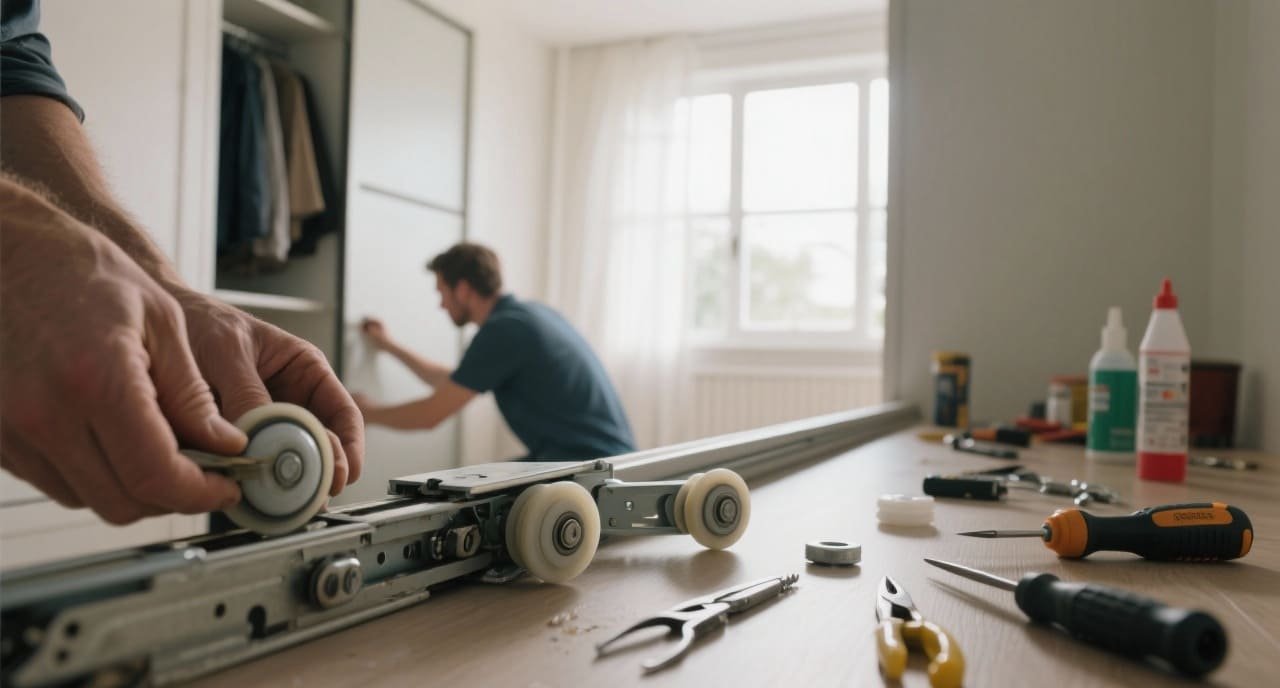
As someone who manufactures these components, I’ve seen it all. A small, broken part can make a whole piece of furniture feel useless. Many of our clients, from large furniture factories to construction contractors, face this issue. They need a reliable, quick fix to keep their projects on schedule and their customers happy. The good news is that with a little guidance, you can handle this repair confidently. Read on, and I’ll walk you through everything you need to know to get that door sliding perfectly again.
How to fix a broken sliding door closet?
Your entire closet space is useless because one door won’t move. This creates clutter and daily frustration. Let’s get it working again with a few simple steps.
To fix a broken sliding closet door, you need to find the real problem. Is it the track, the wheels, or the door’s alignment? Most of the time, the wheels are the issue. Clean the track well and replace any damaged rollers.
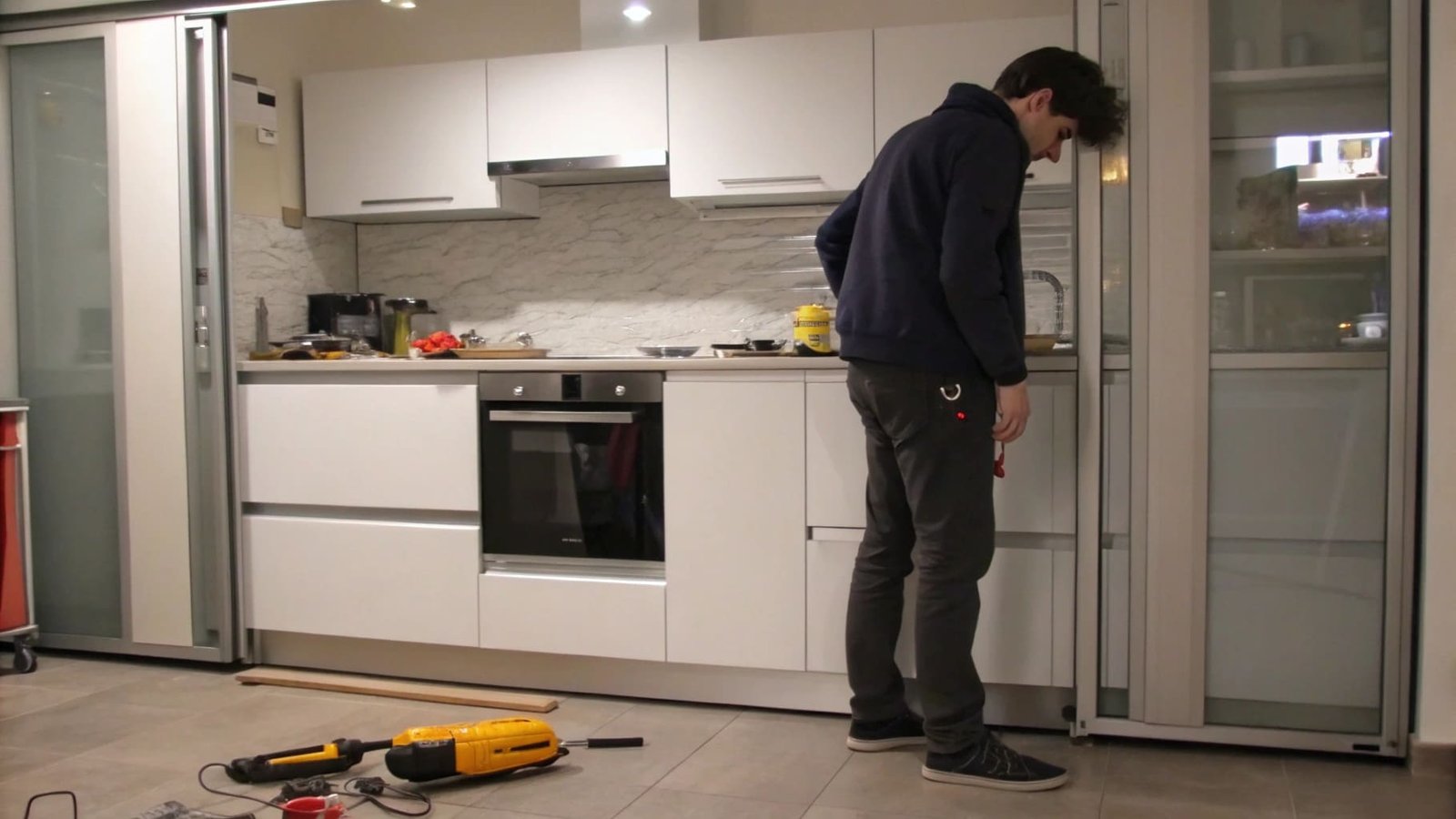
Dive Deeper
When a whole sliding door system1 fails, you need to become a detective. The problem might look big, but it’s usually caused by one small component. As a hardware manufacturer, I tell my clients to always start with a systematic check. This saves time and ensures you fix the right thing the first time.
Identify the Root Cause
Before you buy any parts, you need to know what’s broken. Is the door dragging on the floor? It’s likely a wheel or roller issue. Is it jumping off the top track? The guides might be loose or misaligned. A grinding sound often points to worn-out bearings in the wheels or dirt stuck in the track. Taking a few minutes to observe the door’s movement, or lack thereof, will tell you exactly where to focus your attention.
A Structured Approach to Fixing the Door
| Problem | Likely Cause | Solution |
|---|---|---|
| Door is stuck or hard to move | Debris in track / Damaged wheel | Thoroughly clean the track / Replace the wheel assembly. |
| Door is wobbly or feels loose | Loose roller screws / Misaligned door | Tighten all visible screws / Adjust the rollers for height. |
| Door makes a loud grinding noise | Worn-out wheel bearings / Dirty track | Replace the rollers / Clean the track of all grit and dust. |
| Door jumps off the track | Misaligned guides / Warped door | Adjust the top and bottom guides / Check if the door is straight. |
By following this simple troubleshooting table, you can pinpoint the problem quickly and move on to the solution.
How to fix wardrobe door soft close mechanism?
Your soft-close door now slams shut with a loud bang. This is not only annoying but can also damage the wardrobe frame over time. A simple adjustment can restore peace.
To fix a soft-close mechanism, first check for any dirt or objects blocking it. If it’s clean, you can try adjusting the tension screw on the damper. If that doesn’t work, the mechanism is likely worn out and needs replacement.
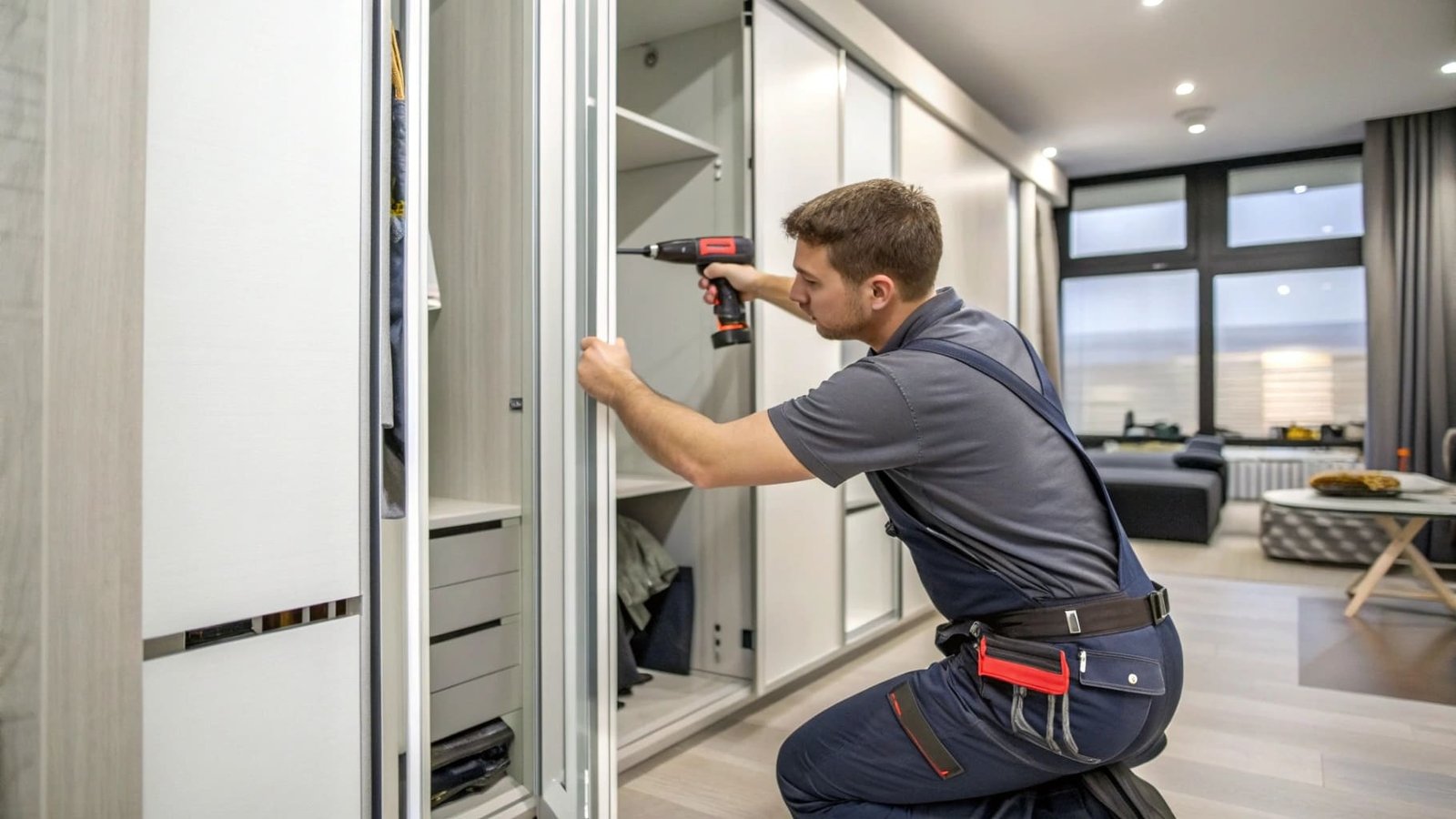
Dive Deeper
Soft-close mechanisms are wonderful until they stop working. In my factory, we produce various sliding systems, and the quality of the damper is critical for a premium feel. When a purchasing manager like Jacky from Canada looks for hardware, he knows a good soft-close system2 signals a high-quality product. If yours has failed, it’s usually due to a loss of pressure in the internal damper or simple wear and tear.
Understanding Your Soft-Close System
Most soft-close system2s use a hydraulic or pneumatic piston3. When the door closes, it catches an actuator that engages the piston. The piston then slowly releases its pressure, guiding the door to a gentle, quiet close. Over thousands of cycles, the seals inside these pistons can wear out, causing them to lose their damping effect. Cheaper mechanisms fail faster, which is why investing in a quality part from a reliable supplier is always more cost-effective in the long run.
Troubleshooting and Replacing the Damper
Before you replace it, give it a quick check. Make sure the small plastic trigger on the door and the main mechanism on the track are both clean and properly aligned. Sometimes, they just get knocked out of position. If it all looks good, try to find an adjustment screw on the damper body; turning it might increase the resistance. If none of that works, it’s time for a replacement. The process is simple: locate the screws holding the old mechanism to the track, remove them, and install the new one in the exact same spot. Make sure the new part has a similar weight rating to the old one to match your door.
How to fix sliding doors on a wardrobe?
Sliding doors that jump their track are a classic problem. They scrape, get stuck, and make the whole wardrobe look messy and broken. You can realign them with just a few tools.
To fix sliding doors, you usually need to lift the door and place it back onto its track. Then, check that the rollers are engaged correctly. You may need to use a screwdriver to adjust the height of the rollers so the door hangs perfectly level.
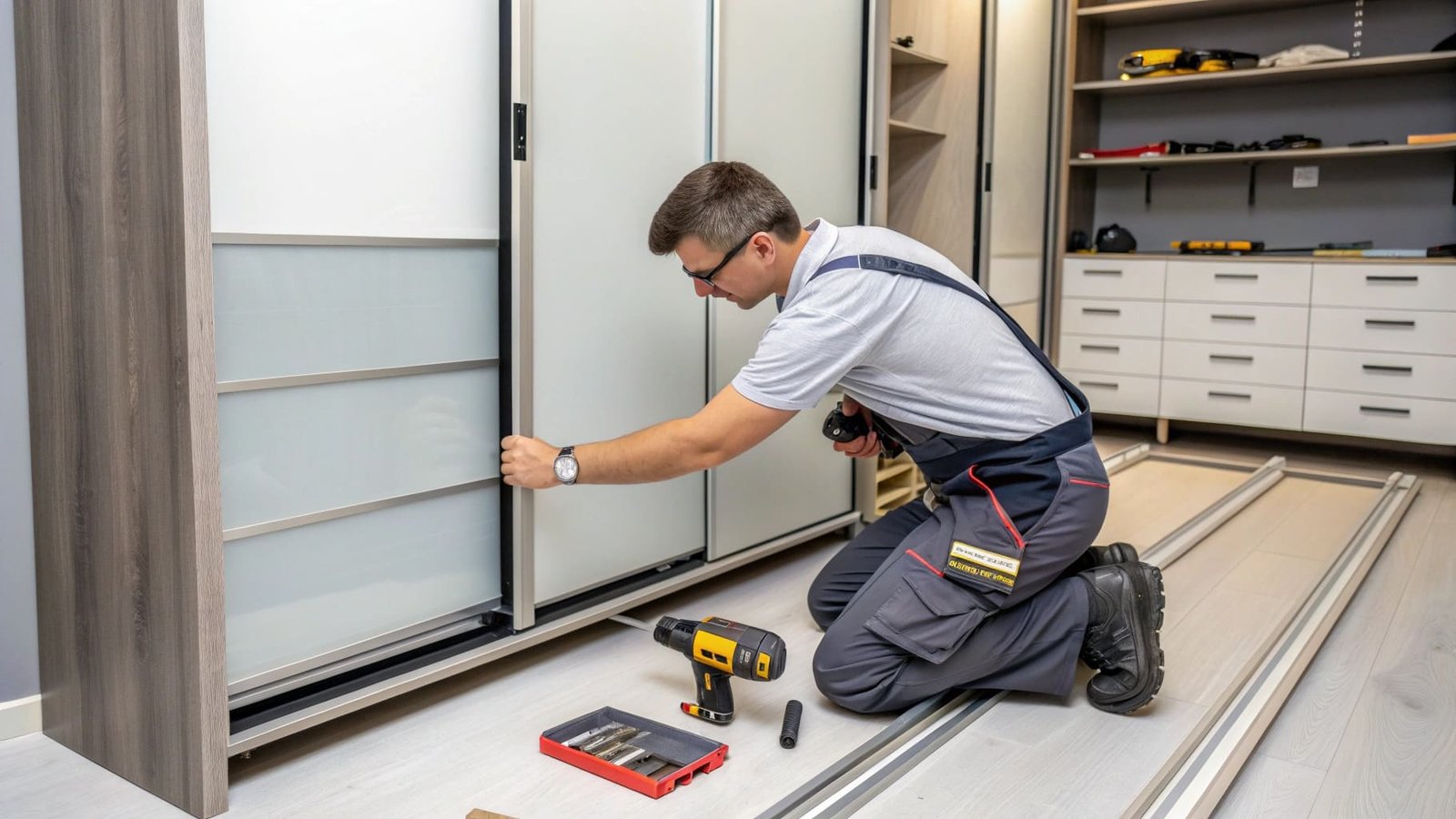
Dive Deeper
A sliding door that isn’t aligned properly is not just an annoyance; it can also damage the track and the door itself over time. I always emphasize to our B2B clients that proper installation4 is key to longevity. But even with perfect installation, doors can become misaligned from the house settling or just from daily use. Fixing this is all about understanding how the guides and rollers work together to keep the door straight and secure.
Why Doors Go Off Track
The most common reasons are simple. A forceful push or pull can knock the rollers out of their groove. Over time, the rollers can wear down, creating too much space between the door and the track. Sometimes, the track itself can become bent or dented, creating a spot where the wheel consistently jumps out. A quick inspection of both the wheels and the track will usually reveal the culprit.
Step-by-Step Realignment Process
Fixing the alignment is methodical.
- Remove the Door: First, you will likely need to lift the door up and tilt the bottom towards you to pull it out of the track. Some systems have clips or locks you need to release first.
- Inspect and Clean: With the door off, inspect the top guides and bottom rollers for any damage. Now is the perfect time to clean the tracks completely. Use a vacuum and a damp cloth to remove all dust and grime.
- Re-hang the Door: Place the top guides or rollers into the top track first. Then, let the door hang and guide the bottom rollers into the bottom track.
- Adjust for Level: Most sliding door rollers have an adjustment screw. Use a screwdriver to turn it. This will raise or lower that corner of the door. Use a level on top of the door to make sure it’s perfectly straight, and adjust until it slides smoothly without catching.
How to fix sliding closet door wheels?
The tiny wheels on your closet door are broken. It’s amazing how this small part can bring your entire wardrobe to a stop. But don’t worry, replacing them is a straightforward job.
To fix sliding closet door wheels, first take the door off its track. After that, use a screwdriver to remove the old, broken wheel assembly. Then, you can simply screw the new wheel into place and re-hang the door.
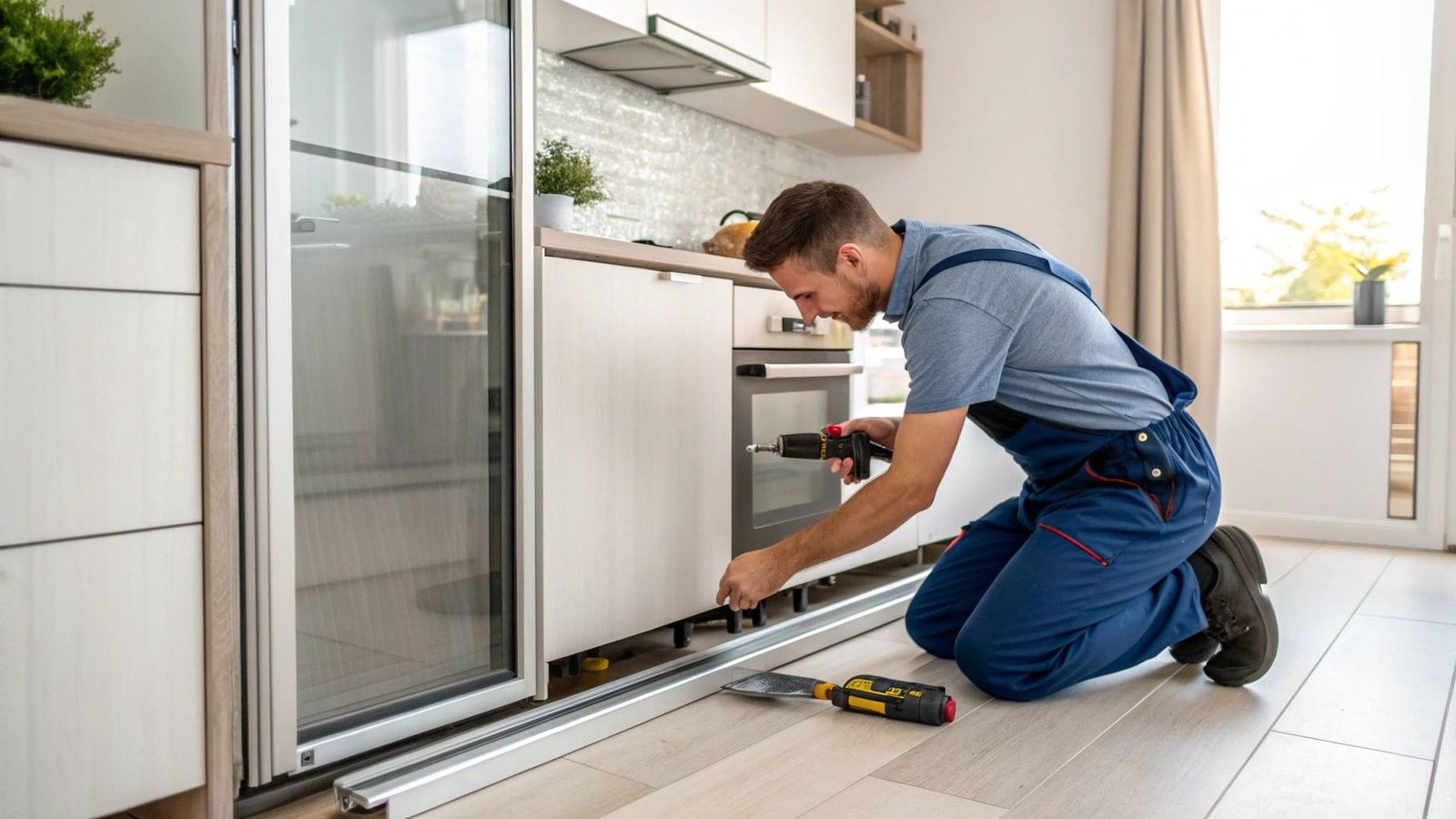
Dive Deeper
The wheels, or rollers, are the heart of any sliding door system. They bear the door’s weight and are responsible for smooth, quiet motion. When a client needs to source parts, I always spend extra time discussing the wheel material5. It has the biggest impact on performance and durability. A cheap plastic wheel might save a few cents initially, but it will lead to unhappy customers and callbacks later. For a professional, choosing the right wheel is a mark of quality.
Choosing the Right Replacement Wheels
You will find several material options on the market, and the choice matters. In my factory, opensliding, we produce different types to meet various quality and budget needs. Understanding them helps you make a better choice.
| Material | Pros | Cons | Best For |
|---|---|---|---|
| Plastic | Very cheap. | Becomes brittle and cracks easily, wears out fast, gets noisy. | Very light doors in low-use areas. |
| Metal | Extremely strong and durable, good for heavy doors. | Can be very noisy on metal tracks, can damage aluminum tracks. | Heavy-duty commercial or industrial applications. |
| Fiberglass/Nylon | Tough, wear-resistant, very quiet, and provides a smooth glide. | Higher initial cost than basic plastic. | All residential and high-end furniture. The best all-around choice. |
For most wardrobe applications, I strongly recommend fiberglass or high-quality nylon wheels. They provide the quiet, smooth feel that customers expect and last much longer.
A Guide to Replacing the Wheels
- Source the Right Part: Take the old wheel with you to the hardware store or measure it carefully to order online. Pay attention to the wheel diameter and the bracket style.
- Remove the Door: Lift the door off its track and lay it on a soft surface, like a blanket, to avoid scratches.
- Unscrew the Old Assembly: The wheel is usually attached to a bracket that is screwed into the top or bottom edge of the door. Simply unscrew it.
- Install the New Wheel: Screw the new wheel assembly into the same holes. Make sure it’s tight and secure.
- Re-hang and Test: Put the door back on the track and slide it back and forth. It should feel like new. Make any final height adjustments if needed.
Conclusion
Fixing a sliding wardrobe door is very manageable. It is usually about finding the problem with the wheels, track, or alignment and replacing the right part. It’s a simple DIY task.
Understanding common issues can help you troubleshoot effectively and save time on repairs. ↩
Understanding the mechanics of a soft-close system can help you choose the right product for your needs. ↩ ↩
Exploring the differences between hydraulic and pneumatic pistons can enhance your knowledge of soft-close mechanisms. ↩
Understanding the importance of proper installation can prevent future issues and extend the life of your sliding doors. ↩
Explore this link to understand how different wheel materials affect performance and durability in sliding door systems. ↩

